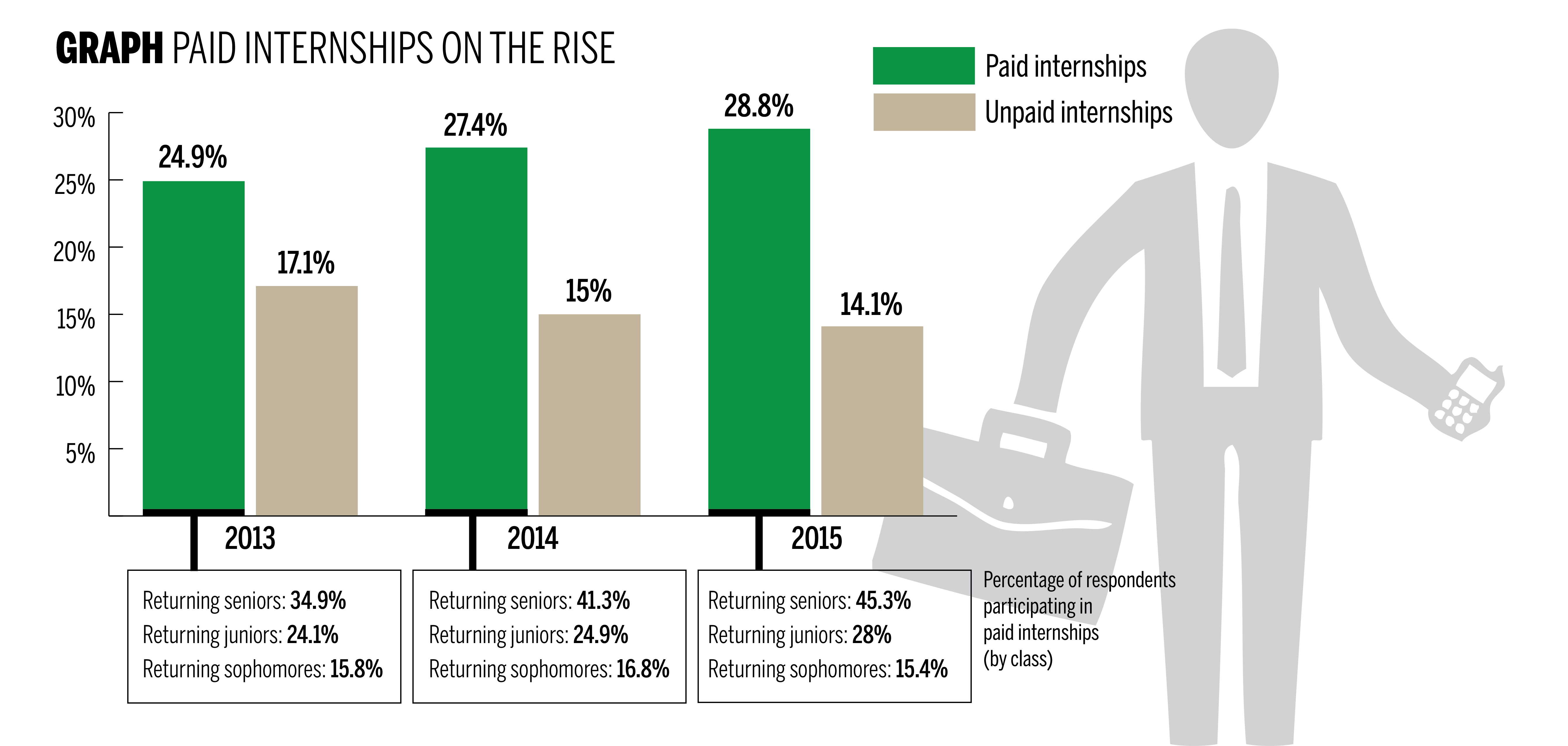
Yale students pursued fewer unpaid internships and more paid internships in summer 2015, continuing an increase that has been ongoing since OCS started tracking the data in 2013.
According to the Summer 2015 Activities Report — which is based on a survey administered to all returning undergraduates by the Office of Career Strategy from August to October — 28.8 percent of respondents participated in a paid internship last summer, representing a stable increase from 24.9 percent in 2013 and 27.4 percent in 2014. The survey -— which was completed by 2,321 students — also tracked notable increases in the number of students employed in functions related to law, education, engineering and finance, as well as decreases in functions like writing and editing as well as administrative and support services. Functions refer to the actual work being performed in a job as opposed to the industry in which it takes place.
Jeanine Dames, director of OCS and associate dean of Yale College, suggested the increases could be due to a stronger economy creating more paid internship opportunities, in addition to students taking full advantage of career planning resources at Yale.
“I think the economy has definitely improved in the last couple of years,” Dames said. “I also think students have become very good at their job search. I hope that’s a credit to how we’re doing in this office.”
Dames added that student engagement with the OCS — as measured by the number of student appointments made this semester — is the highest the office has ever seen.
But the increase in paid internships is not distributed evenly among classes — rather, the change is largely concentrated among returning seniors. Since 2013, that figure has risen 10.4 percent to 45.3 percent, while there has been a slight increase of 3.9 percent for juniors and a decrease of 0.4 percent for sophomores.
Travis Gonzalez ’16 suggested that the marked increase among seniors may be due to employers wanting to hire older students for paid internships.
“People are more willing to give money to older students because they’re more invested in what they’re doing as opposed to underclassmen who are still experimenting,” he said.
Students also noted that the availability of a paid internship depends greatly on the industry. Sam Kim ’18 said the increase in students pursuing internships in finance may be because it is one of the only sectors that can afford to pay college interns. By contrast, Gonzalez said that in film — the field he is pursuing — paid internships opportunities are relatively rare.
However, Kim added that it was unclear from the survey data whether the change is occurring because of students or employers. For example, students may be applying for more paid internships, but it is also possible that employers are offering more paid positions. Gonzalez also said that ongoing lawsuits over unpaid internships may have contributed to the decreasing trend.
Still, Jacob Bennett ’16 said he believes the jump in paid internships has to do with a disproportionately large interest in finance on campus. If the importance of finance and banking for students rises, he said, the survey results will show an increase in paid internships. And indeed, the number of students employed in functions related to finance increased from 6.5 percent to 11.2 percent since last summer, according to the 2015 report.
In writing and editing, Dames posited that there may have been fewer opportunities for students since the field is in a transitional state caused by the advent of alternative forms of media. The number of students participating in roles related to writing and editing decreased by almost half since 2013, according to the survey data.
One element that has remained consistent since the survey was introduced in 2013 is language study: around 20 percent of returning sophomores participated in language study programs from 2013 to 2015. In those programs, sophomores exceed the number of juniors and seniors combined.
Research was by far the most common employment role for students in 2015, encompassing 17.6 percent of all respondents.







